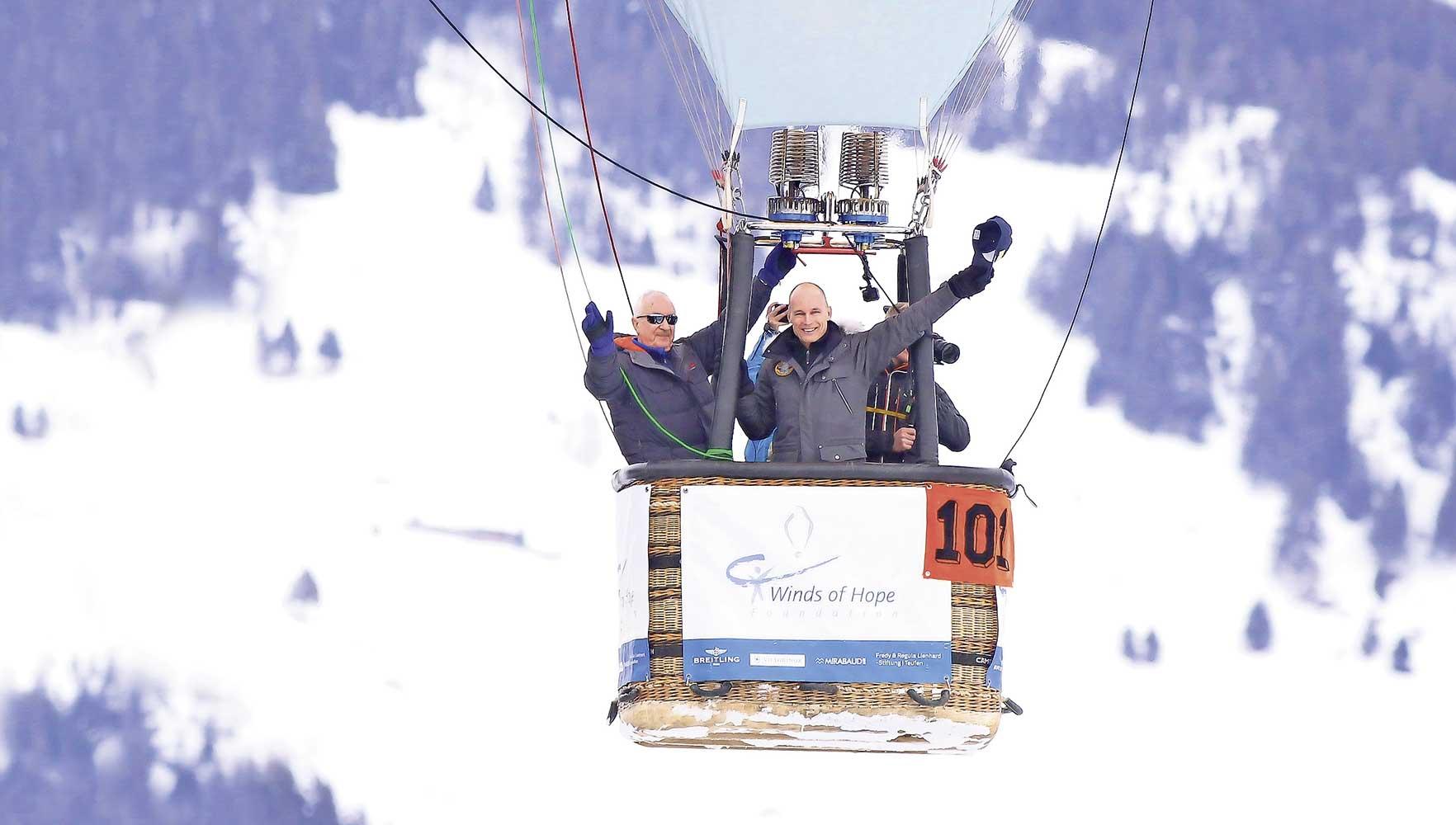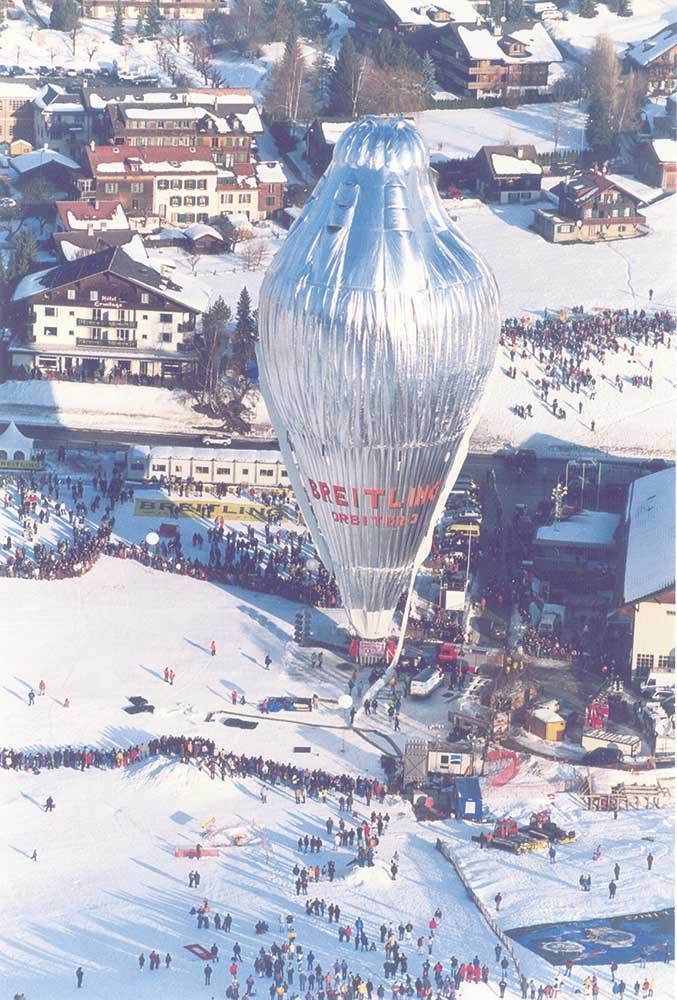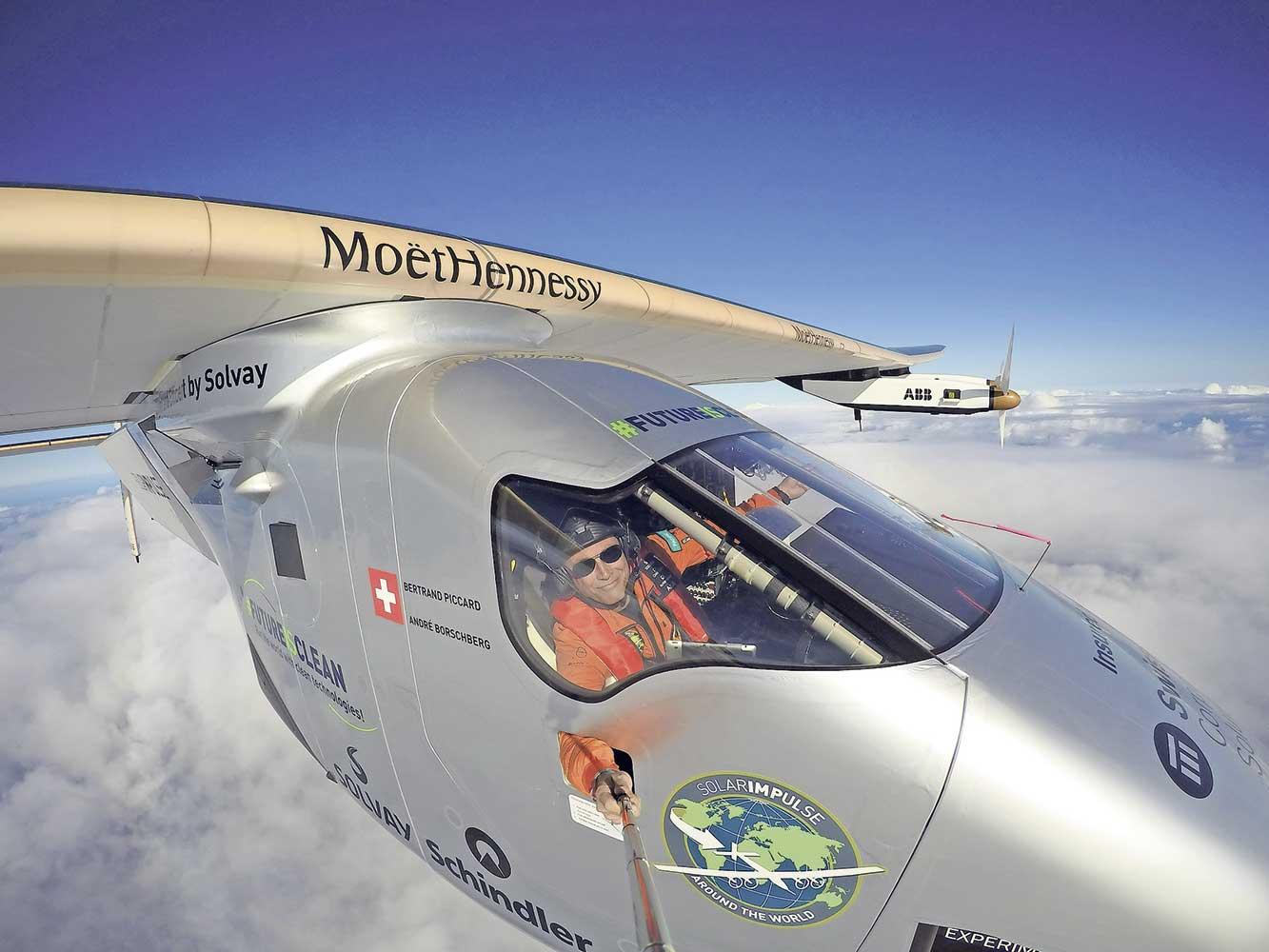1,000 solutions
14.08.2019 ProfileThis year marks the 40th anniversary of the Château-d’Oex International Balloon Festival. What attracts you to hot-air ballooning in general and to this festival in particular?
What I really like in Château-d’Oex is the alternation of different winds and the microclimate that makes it so enjoyable to fly in the valley as a balloon pilot. Today I landed in the spot where I took off, simply because the winds were always changing.
We manage to exploit the wind currents at different altitudes to change direction. What’s interesting about hot-air ballooning is that we don’t know where we’re going to land. What we do know, however, is that we have to go with the forces of nature. If we want to get to a particular destination we need to change altitude and find a wind that’s blowing in that direction.
I think life is the same – that’s why for me ballooning is a philosophy much more than a sport. Life will often take us in a particular direction whether we like it or not. But, if we change our attitude on a psychological or spiritual level, we can find other influences in other directions that will take us elsewhere. We need this spirit of exploration all the time, every day, not just when we’re in a balloon.
With its exceptional microclimate, Château-d’Oex attracts the best balloon pilots from all over the world. And the scenery is stunning. Imagine flying over snow-covered mountains with 80 other balloons in the sky. It’s totally unique! I hope there continues to be sufficient sponsorship to keep this festival alive. It’s clear to me that it’s an event that is very important – not only for the region but also for Switzerland – so it has to continue. I have participated in every festival over the past 40 years and I would like be part of the next 40 too.
A central theme of this year’s Balloon Festival is the 20th anniversary of your round-the-world flight with Brian Jones in the Breitling Orbiter 3. What special memories or emotions does this anniversary hold for you now, 20 years later?
It reminds me of the five years of work, hope, doubts, problems and crises that I had to go through before we succeeded in our 20-day flight round the world. It took five years to find the sponsor, to put the team together, to identify the best meteorologist, to get the balloon built, to participate in its construction and to obtain the overflight permissions. It was a huge, huge project.
Added to that, we needed to organise all the training for the people involved. Then, when we took off, we had five years behind us and, in front of us, a huge hope of success but no idea of whether we would make it. We really had to live with a lot of emotion and a lot of doubt. You need to be very resilient to undertake a project like that.
I understand that during the flight you launched the Winds of Hope Foundation and subsequently worked with the World Health Organization in its fight against Noma. Could you describe the work of the foundation and your subsequent collaboration with the United Nations and its agencies?
The Winds of Hope Foundation was created when I was flying with Brian. We obtained the support of Breitling to use some of our prize money from our round-the-world flight to help children suffering from Noma – an absolutely horrible, completely neglected disease that very few people know or care about. It’s a mutilating disease, gangrene, absolutely horrible. Children in the poorest regions of the world lose parts of their faces. A victim doesn’t lose just a bit of skin, no. A victim can lose the nose or even the jaw.
We thought, “This is an area where we can help because we have some financial resources and we have some fame and recognition.” So we created programmes in sub-Saharan Africa, where we try to prevent Noma and help people make early diagnoses. The illness often starts simply with a swollen cheek. Unfortunately, the locals don’t realise what’s happening and they take no action. Yet, if they knew that it was the beginning of Noma, they could save the victim with a couple of dollars’ worth of antibiotics.
We have trained hundreds of health agents in several countries to help people recognise the symptoms and take action. Unfortunately, we cannot travel to the afflicted countries as much as we would like to because of terrorism and the associated dangers so we support local people to work against the disease.
Many people followed your flight in 2016, when you circumnavigated the world in the Solar Impulse, covering 42,000 kilometers powered exclusively by solar energy. To what extent do you feel this endeavor challenged the perceived limits of solar and renewable energy?
The goal was really to show that we can do impossible things with renewable energies and clean technologies. It was a time when a lot of people thought that having clean technologies would be a return to the past, a regression, that they would have less and could do less. I wanted to show that, on the contrary, with renewable energies and clean technologies we can do more and we can have more.
Do you feel it was successful in changing the public's understanding about what could be done with solar energy?
Yes. It changed the perceptions of a lot of people, especially in the political world. They were impressed that solar energy can really achieve incredible things. It was not just a one-off anecdote. I am now using the Solar Impulse Foundation to select 1,000 solutions that can protect the environment in a financially profitable way.
The objective is to bring tools to the industry and the political world that will not only protect the environment but, in doing so, create jobs and increase profit. It’s a way to speak the language of the people we want to convince. My foundation is fully committed to this and I have to say that it’s going really well. We have many countries, regions and institutions – including the United Nations and the World Bank – asking us for help or support in implementing these solutions.
At the recent World Economic Forum, the teenager Greta Thunberg said to world leaders, “I want you to panic... I want you to act as if the house is on fire.” In light of these statements and the recent reports that we have only 12 years to decarbonise, are you optimistic about the efforts we are making in climate change?
We need people to panic because of the extreme danger that we’re facing. But it’s not enough to panic. We also need to provide solutions. We need both panic and solutions because, if we panic and don’t change anything, the world will sink anyway. We need to panic, we need to be really afraid and to know that it will be a disaster if we don’t change. And then, we need to have and to use solutions to enable change.
We need solutions that are, if possible, profitable because profitable solutions will be adopted much more quickly. We may have a head of state or a head of a big corporation who panics and says, “There is nothing I can do. I cannot change production because I need to consider depreciation and maintain my supply chain. I don’t know what to do; we’re going to sink if we change.” But if this person is presented with some profitable solutions, the response would be: “OK, I am able to diversify. We have new technologies and new solutions. I will be able to pay the salaries of my staff and maybe even more since we can make new types of products and use new types of energies. My staff can be more efficient in what they do. We can produce less CO2 and be more efficient, more effective, and more competitive. Yes, we can do it!”
I’m very optimistic when I see the number of solutions that exist. However, having said that, I must admit that I am pessimistic when I see how long it takes to implement them.
Thank you very much for meeting with Gstaadlife. We look forward to following the progress of the Solar Impulse Foundation in its quest to find 1,000 efficient solutions.
Guy Girardet






